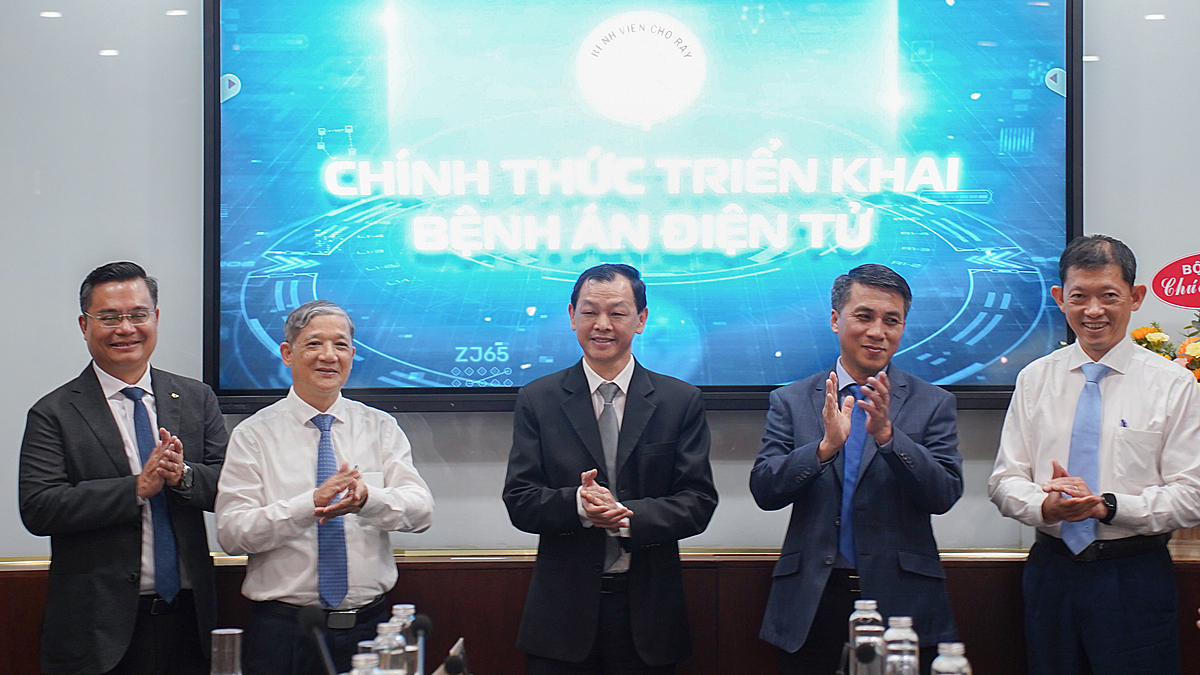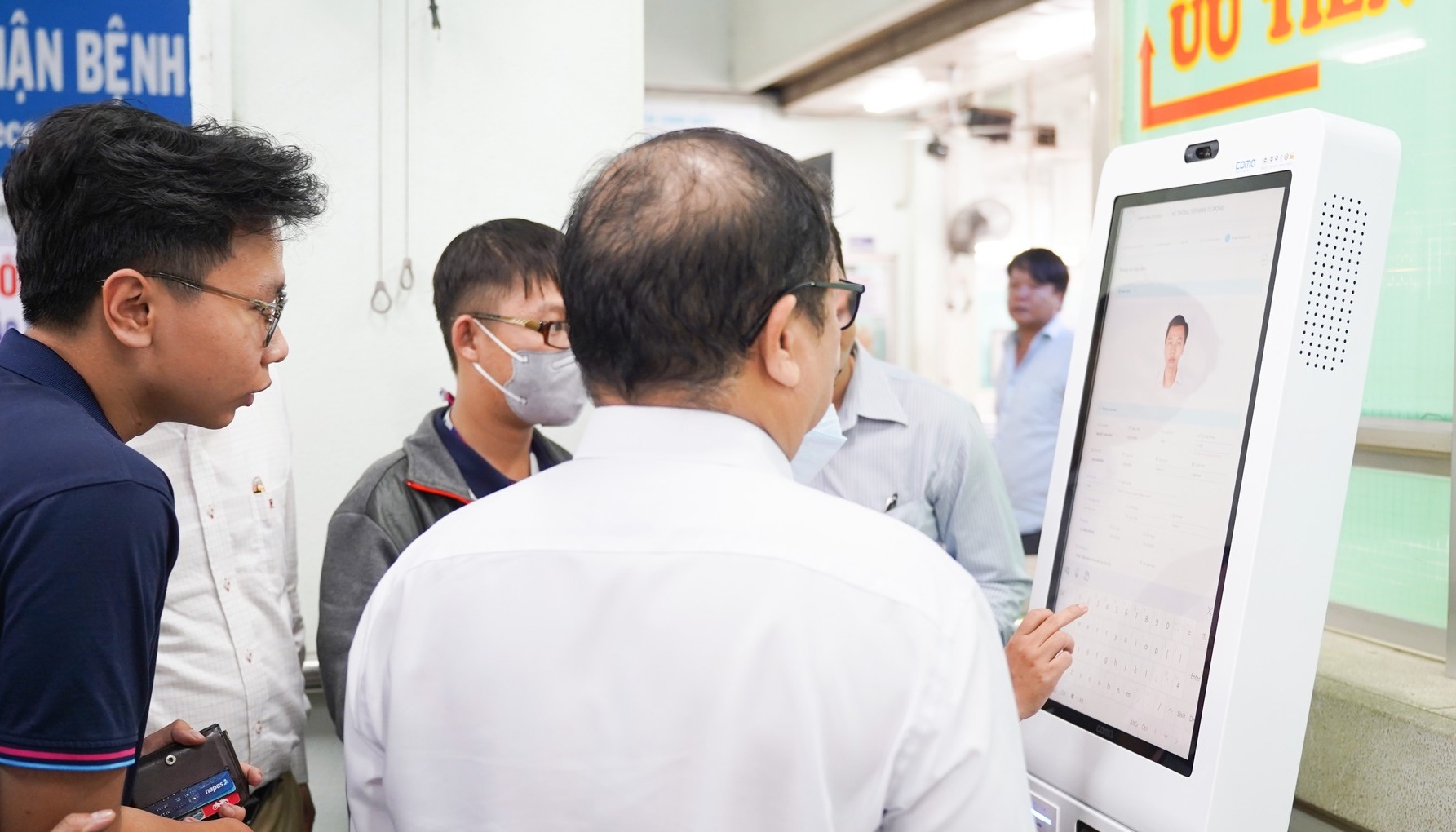Associate Professor Pham Thanh Viet, Deputy Executive Director of Cho Ray Hospital, stated that the hospital accelerated the project to meet the government and Ministry of Health's goal of nationwide EMR implementation by 30/9.
According to Dr. Viet, Cho Ray has been using information technology since 1998, gradually forming the foundation for EMRs. However, as a final referral hospital with multiple specialties and complex disease patterns, the implementation process faced many challenges. The hospital had sent a delegation to Japan to study their model, but it couldn't be applied due to differences in systems and conditions. In recent months, Cho Ray mobilized all its resources and achieved system-wide cooperation to successfully implement the EMR system.
"The system currently meets basic examination and treatment needs, simplifying doctors' work and reducing errors. The hospital will continue to improve, moving towards a paperless system for all operations," he said.
Deputy Minister of Health Nguyen Tri Thuc, former director of Cho Ray Hospital, believes that the EMR implementation at Cho Ray is "late but on the right track." By learning from the experiences of others, the hospital avoided many pitfalls and significantly shortened the implementation time.
According to the Deputy Minister, the turning point came from Resolution 57 and the strong direction of the government and Ministry of Health, along with the pressure from Project 06. "Initially, we thought the 30/9 deadline was impossible, but that pressure broke the inertia around digital transformation. Everyone worked together, even through the night, to make the impossible possible," he said.
He also believes that EMR implementation is not merely applying information technology, but a complete change in hospital management. The system must connect everything from medical expertise and healthcare laws to health insurance, human resources, finance, rewards, timekeeping, and sick leave policies. Therefore, the hospital can't simply copy models from abroad or private hospitals.
 |
Deputy Minister of Health Nguyen Tri Thuc (center) participates in the launch of electronic health records at Cho Ray Hospital on the afternoon of 5/9. Photo: Nguyen Hanh |
Deputy Minister of Health Nguyen Tri Thuc (center) participates in the launch of electronic health records at Cho Ray Hospital on the afternoon of 5/9. Photo: Nguyen Hanh
Reflecting on the pilot phase, Associate Professor Tran Thanh Linh, Head of the Intensive Care Unit at Cho Ray Hospital, said EMRs shorten healthcare workers' time, reduce errors in medical orders, and improve patient care standards. Data can be extracted and reviewed, creating a foundation for future specialized research and AI applications. Patients can also track their treatment results via a mobile app.
Dr. Duong Huy Luong, Deputy Director of the Department of Medical Examination and Treatment Management (Ministry of Health), considers Cho Ray a leader in EMR implementation among large general hospitals, which face complex disease patterns and 7,000-8,500 outpatient visits daily.
"As a leading general hospital in the south, Cho Ray's smooth EMR operation will serve as a model for others to learn from and replicate, contributing to digital health advancements and improved patient care," Dr. Luong said.
 |
EMR implementation at Cho Ray Hospital. Photo: Hospital provided |
EMR implementation at Cho Ray Hospital. Photo: Hospital provided
Vietnam has over 1,800 hospitals, but by mid-June, only 270 had transitioned to EMRs. The Ministry of Health requires all hospitals to eliminate paper records by 30/9, with the remaining facilities to complete the transition by the end of 2026.
EMRs shorten patient waiting times through online registration, synchronize data for easy doctor access, and reduce printing and imaging costs. The system also enables interoperability between healthcare facilities, limiting repeat testing, enhancing transparency in insurance management, and reducing administrative procedures.
Le Phuong












